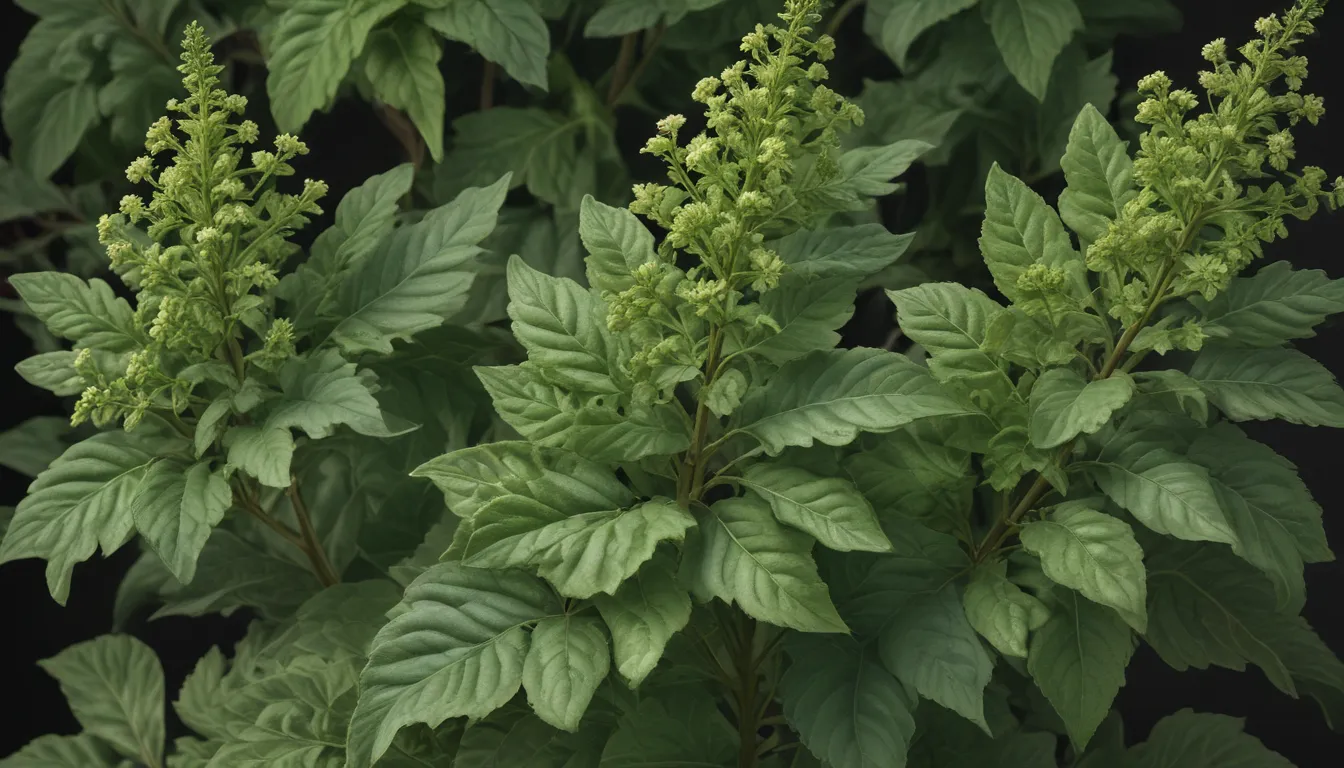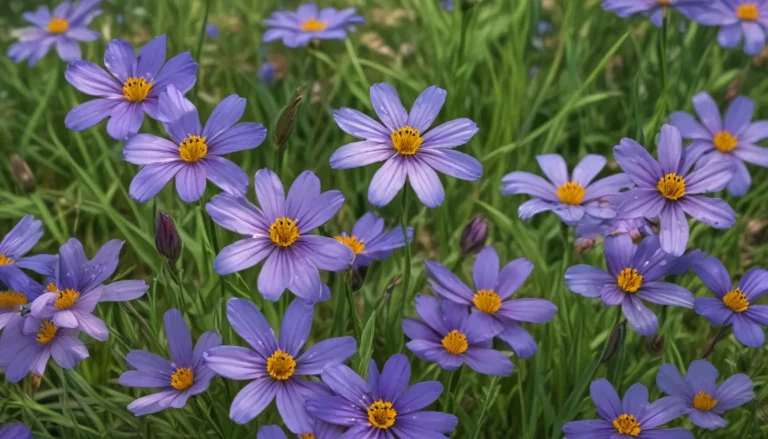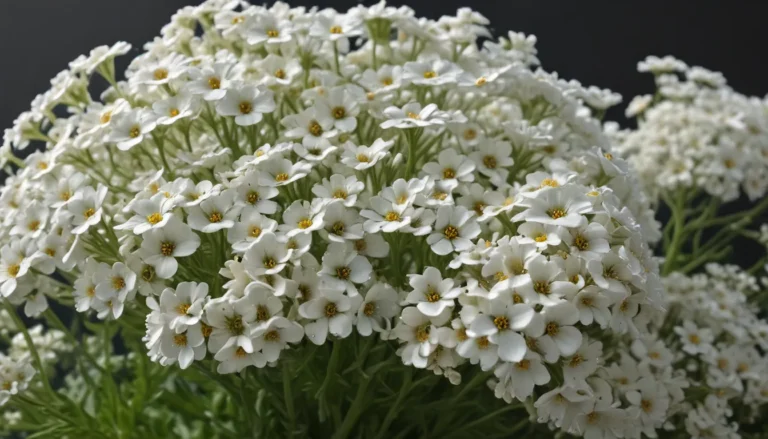The pictures we use in our articles might not show exactly what the words say. We choose these pictures to make you interested in reading more. The pictures work together with the words but don’t take their place. The words still tell you the important facts.
Chenopodium, commonly known as goosefoot, is a captivating genus of plants that has fascinated plant enthusiasts and researchers for generations. From its diverse species to its rich historical significance, Chenopodium offers a treasure trove of information waiting to be discovered. In this comprehensive guide, we will delve into 19 fascinating facts about Chenopodium, shedding light on its cultural, medicinal, and ecological importance.
The Diverse World of Chenopodium
Chenopodium is a vast genus of flowering plants that encompasses over 150 species, each distinct in its appearance, habitat, and uses. These plants are widely distributed across different regions of the world, from North America to Africa, showcasing their adaptability and versatility.
A Plant with Ancient Roots
With a history of cultivation spanning thousands of years, Chenopodium has been a staple crop for ancient civilizations such as the Aztecs, Incas, and Mayans. Its significance in human civilization highlights its cultural and historical value.
Nutritional Powerhouse: Edible Chenopodium Leaves
Certain Chenopodium species, like Chenopodium album (lamb’s quarters), offer not only edible leaves but also a nutritional boost. Rich in vitamins A and C, calcium, iron, and potassium, these leaves are a valuable addition to a balanced diet.
Medicinal Marvels of Chenopodium
Traditional medicine has long recognized the medicinal properties of Chenopodium species. Chenopodium ambrosioides (Mexican tea) is known for its anthelmintic and antimicrobial effects, showcasing the plant's therapeutic potential.
Seed of Success: Chenopodium Seeds as a Grain Substitute
Chenopodium quinoa, commonly known as quinoa, is a gluten-free grain substitute that boasts a complete protein source. Packed with all nine essential amino acids, quinoa is a nutritional powerhouse with a nutty flavor.
Surviving All Conditions: Chenopodium’s Adaptability
From arid deserts to cold mountainous regions, Chenopodium thrives in diverse climates, making it a resilient and versatile plant. Its ability to adapt to various conditions underscores its hardiness.
Soil Savior: Chenopodium’s Role in Soil Improvement
Certain Chenopodium species, like Chenopodium album, are nutrient accumulators that enhance soil fertility by absorbing excess nitrogen and minerals. Their contribution to soil improvement is essential for maintaining healthy ecosystems.
Antioxidant Rich: The Protective Power of Chenopodium
Chenopodium plants are a rich source of antioxidants, including flavonoids and polyphenols. These compounds help protect the body from harmful free radicals, promoting overall health and well-being.
The Unnoticed Beauty of Chenopodium Flowers
While Chenopodium leaves and seeds often steal the spotlight, the plant's flowers are small and inconspicuous, typically greenish or white in color. Despite their understated appearance, these flowers possess unique characteristics.
Partners in Pollination: Chenopodium’s Relationship with Insects
Chenopodium serves as a host plant for various insects and butterflies, providing them with a vital food source and breeding ground. These interactions contribute to the plant's ecological significance in supporting diverse insect populations.
Chenopodium’s Artistic Contribution: Dye Production
Certain Chenopodium species, such as Chenopodium rubrum, have been traditionally used for producing natural dyes. The vibrant red and pink hues derived from the leaves add a splash of color to the world of natural dyes.
A Spinach Connection: Chenopodium’s Relationship with Spinach
Belonging to the same family as spinach (Amaranthaceae), Chenopodium shares a close relationship with this popular leafy green. Some Chenopodium species, like Chenopodium bonus-henricus, are used as a spinach substitute.
Culinary Delights: Chenopodium’s Edible Seeds
Many Chenopodium species produce edible seeds with a delightful nutty flavor. These seeds can be incorporated into a variety of culinary creations, including bread, granola, and salads, adding a nutritious twist to dishes.
Sacred Symbolism: Chenopodium in Traditional Ceremonies
In certain cultures, Chenopodium plants play a significant role in rituals, festivals, and spiritual practices, reflecting their ceremonial importance. The cultural and traditional value associated with Chenopodium is deeply ingrained in various societies.
Nature’s Shield: Chenopodium Leaves as Insect Repellent
Crushed Chenopodium leaves have been used for centuries as a natural insect repellent. The strong aroma of the leaves acts as a deterrent for mosquitoes and other biting insects, offering a natural alternative to chemical repellents.
A Visual Feast: Chenopodium’s Ornamental Value
Some Chenopodium species, such as Chenopodium giganteum (giant goosefoot), are prized for their ornamental foliage. Their large, vibrant leaves enhance the visual appeal of gardens and landscapes, adding a touch of natural beauty.
Historical Legacy: Chenopodium’s Significance Through Time
Throughout history, Chenopodium has left its mark on various cultures and civilizations, from its cultivation practices to its culinary uses and spiritual associations. Its deep-rooted historical and cultural significance continues to be celebrated today.
Unveiling the Enigma of Chenopodium
Chenopodium, with its intriguing history, diverse benefits, and unique traits, stands as a testament to the wonders of the plant kingdom. Whether exploring its ancient uses, medicinal properties, or ornamental value, there is much to uncover about this remarkable genus. As we immerse ourselves in the captivating world of Chenopodium, we gain a deeper appreciation for the natural world and the mysteries it holds.
Conclusion
Chenopodium, with its rich history, nutritional value, and adaptability, remains a plant of endless fascination. From its ancient origins to its modern-day uses, Chenopodium continues to captivate the imagination of plant enthusiasts and researchers alike. As we peel back the layers of this versatile genus, we unveil a world of beauty, functionality, and ecological importance. Whether in the garden, the kitchen, or the laboratory, Chenopodium stands as a testament to the incredible diversity of the plant kingdom.
FAQs
-
What are the common uses of Chenopodium?
Chenopodium has a wide range of uses, including culinary purposes, traditional medicine, erosion control, and potential biofuel production. -
Are all Chenopodium species edible?
Not all Chenopodium species are edible, as some may contain toxic components. It is essential to identify edible species before consumption. -
Can Chenopodium thrive in different climates?
Yes, Chenopodium is known for its adaptability to various climates, allowing it to grow in diverse environments. -
What health benefits are associated with consuming Chenopodium?
Chenopodium is a nutritional powerhouse, packed with vitamins, minerals, and antioxidants that promote overall health and well-being. -
Is Chenopodium considered a sustainable crop?
Yes, Chenopodium is considered a sustainable crop due to its ability to thrive in different conditions, its minimal water requirements, and its role in improving soil fertility.
As we unravel the mysteries of Chenopodium, we discover a world of wonder, beauty, and endless possibilities. Join us on this botanical journey as we uncover the enchanting secrets of this remarkable plant genus.
Was this page helpful?
Our dedication to providing engaging, accurate content is at the core of our mission. Each nugget of information on our site is contributed by individuals like you, bringing a wealth of diverse insights and knowledge. With our team of editors meticulously reviewing each submission, you can trust that the facts we share are not only captivating but also credible. Explore, learn, and grow with us as we continue to showcase the fascinating world of plants and nature.






